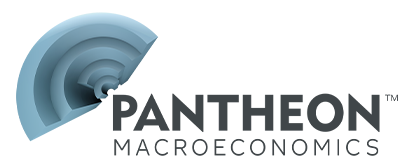UK Publications
Below is a list of our UK Publications for the last 5 months. If you are looking for reports older than 5 months please email info@pantheonmacro.com, or contact your account rep
Please use the filters on the right to search for a specific date or topic.
Daily Monitor
- May’s huge fall in payrolls looks exaggerated; other indicators, such as redundancies, are improving.
- Rising LFS employment and falling payrolls point to workers shifting towards self-employment.
- Wage growth is easing gradually but still remains way above inflation-target-consistent rates.
- We expect CPI inflation in May to slow to 3.4%—close to rounding to 3.3%—from 3.5% in April.
- A correction to Vehicle Excise Duty and airfare falls will be partly offset by strong food and clothes prices.
- May’s CPI inflation will likely match the MPC’s forecast, and services inflation will slightly exceed it.
- The ONS overstated April CPI by 0.1pp because of an error in Vehicle Duty; this will be corrected in May CPI.
- We adjust our forecasts only fractionally because we had assumed a good chance that VED was wrong.
- Strong goods prices mean inflation should slow only to 3.4% in May, from the erroneous 3.5% in April.
- The May PMI shows UK growth still weak, but recovering as April’s tariff panic fades.
- GDP growth usually far exceeds the PMI steer when uncertainty is high; we look for 0.3% q/q growth in Q2.
- Services firms squeezing margins holds out the hope of inflation easing, but we think it’s just a blip.
- We expect the initial estimate of May payrolls to show a 26K month-to-month decline.
- LFS unemployment will likely tick up to 4.6% in April, and LFS employment should gain 48K.
- We expect year-over-year whole-economy AWE ex-bonus growth to fall to 5.3% in April, from 5.6%.
- Consumers are back to spending rather than saving, which should keep GDP growth ticking along.
- Households seem to be reducing saving, and borrowing on credit cards to support spending.
- Manufacturing is past the worst, and so far we see little sign of trade diversion cutting goods inflation.
